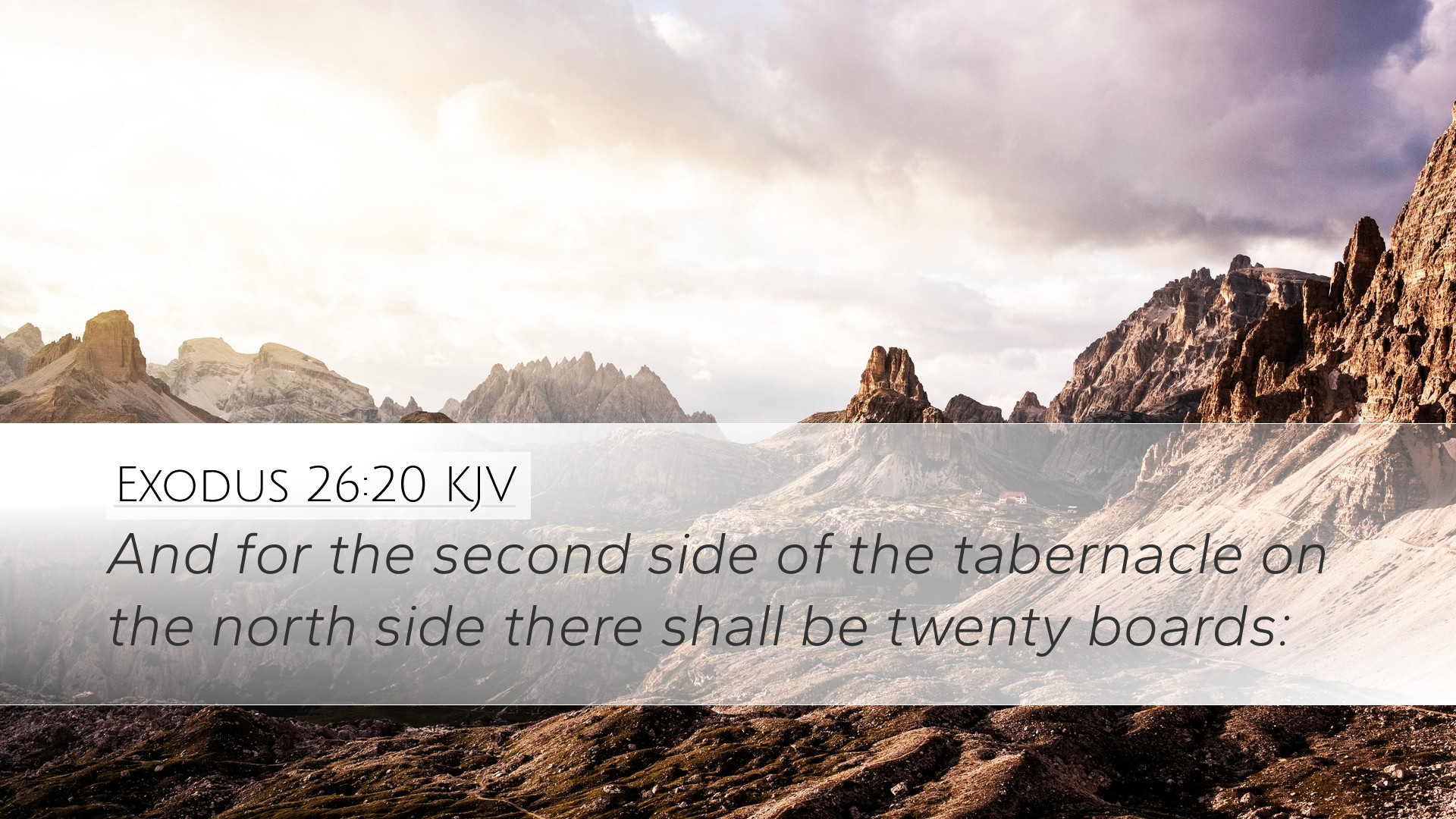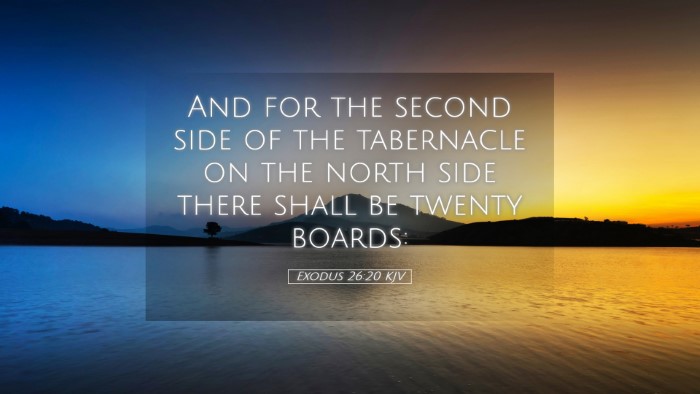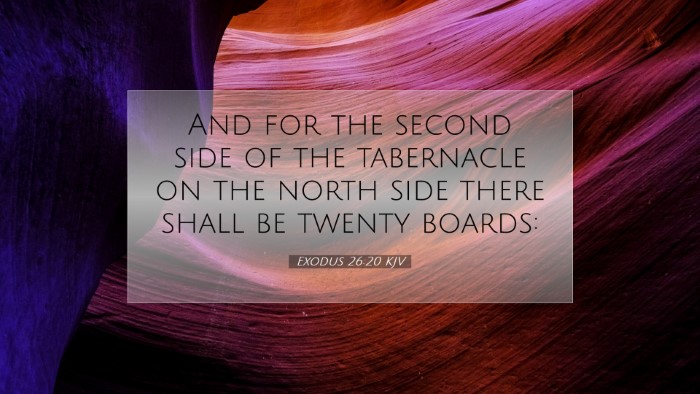Commentary on Exodus 26:20
Exodus 26:20 states: "And for the second side of the tabernacle, on the north side, there shall be twenty boards." This verse contributes to the overall detailed instructions for the construction of the Tabernacle, which served as the portable dwelling place of God among the Israelites during their journey through the wilderness.
Context and Background
The significance of the Tabernacle cannot be overstated in the narrative of Exodus. It symbolizes God's dwelling with His people and represents His holiness, glory, and the covenant established between Him and Israel.
Structural Analysis of the Verse
In this part of the instruction, God commands Moses on how to construct the north side of the Tabernacle. The term "boards" refers to the wooden structures that formed the walls and framework of the Tabernacle.
The Use of Boards
- Material: The boards were made from acacia wood, durable and suitable for this significant structure.
- Dimensions: Each board measured 10 cubits high and 1.5 cubits wide, emphasizing the grandeur of the structure.
- Arrangement: The mention of "twenty boards" indicates an exact measure that ensures stability and functionality.
Theological Implications
God’s detailed instructions reveal several theological implications that are essential for understanding the relationship between God and His people:
1. God’s Desire to Dwell Among His People
God’s command for a physical dwelling spot indicates His desire to be with His people. The precision in the design demonstrates His sovereign control and intimate concern.
2. Holiness and Separation
The design of the Tabernacle represents the holiness of God. The Tabernacle was a sanctuary separated from the outside world, emphasizing that while God desires communion with humanity, He is also distinct and holy.
3. Symbolism of the Boards
The boards can symbolize the community of believers, especially as the church is often referred to as the body of Christ. Just as the boards supported the Tabernacle, believers collectively support the spiritual house of God.
Insights from Notable Commentators
Matthew Henry
Matthew Henry emphasizes the importance of the Tabernacle as established by divine command, signifying the presence of God. He notes that the precise details regarding the boards reflect God's order and purpose in worship.
Albert Barnes
Albert Barnes underlines the significance of the boards in creating a structure that would safely house the sacred artifacts of the covenant. He points out that this design was not arbitrary, but was intended to teach lessons about divine holiness and the need for barriers between God and sinful humanity.
Adam Clarke
Adam Clarke reflects on the logistics involved in crafting the boards and how practical considerations do not overshadow their spiritual significance. He notes how the physical structure symbolizes the spiritual preparation required for approaching God.
Practical Applications for Today
The understanding of Exodus 26:20 extends beyond mere construction details; it has practical implications for believers today:
- God's Presence: Like the Israelites, we too have the assurance of God's presence among us through the Holy Spirit, reminding us of His covenant and faithfulness.
- Holiness in Worship: The meticulous design symbolizes that our approach to God must be in reverence, acknowledging His holiness.
- Unity in Diversity: Just as the boards came together to create a unified structure, believers are called to come together, each contributing their unique gifts to the body of Christ.
Conclusion
In conclusion, Exodus 26:20 encapsulates essential themes of God’s desire to dwell with His people, His holiness, and the communal nature of worship. The unity of the boards mirrors the unity of the Body of Christ, reminding us of our collective role in God’s redemptive plan.


